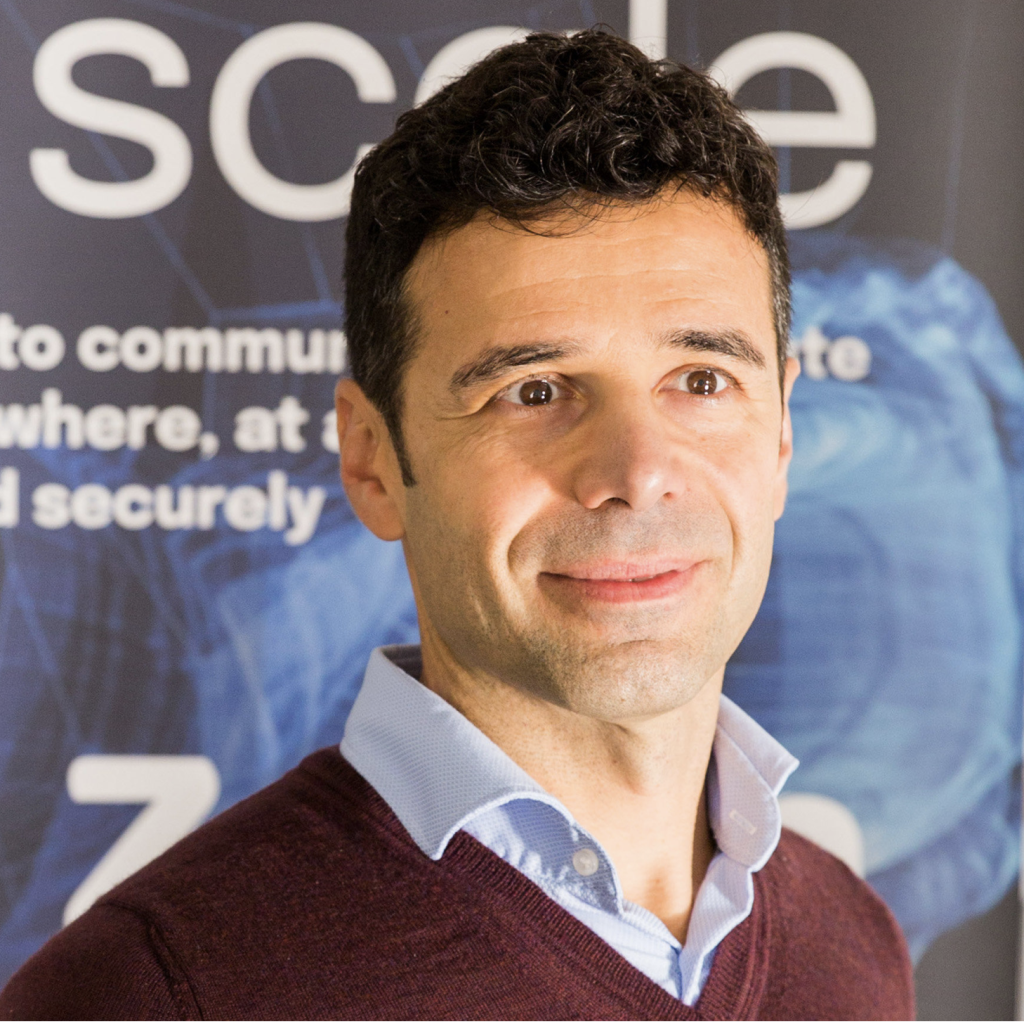Several companies in the transportation, robotics, and telecom sectors are turning to a new communications protocol to significantly cut the amount of energy required to send data. This shift has implications in of areas, everything from helping those companies meet their Net Zero carbon goals to making batteries last much longer. The new Zenoh protocol by ZettaScale is designed for flexible data management and transfer in edge computing environments. What follows is a conversation with Angelo Corsaro, Ph.D., Chief Executive Officer and Chief Technology Officer at ZettaScale Technology and Connected World.
Connected World: What is Zenoh, and why is it so important for the telecommunications industry?
Angelo Corsaro: To understand Zenoh and grasp its potential, it is important to appreciate the three key challenges that led to its invention.
Challenge #1: Connectivity Islands – Existing protocols were designed to work on a very specific use case and in a way to address a “connectivity island.” As an example, DDS (data distribution service) was designed to provide a pub/sub protocol that works best for applications running on resourceful hardware connected by multicast-enabled UDP (user datagram protocol) IP (internet protocol) wired-LAN (local area network). At the opposite side of the spectrum, we have MQTT (message queuing telemetry transport), which was designed to support pub/sub via a client to broker architecture over TCP (transmission control protocol)/IP networks. Thus, the legitimate question to ask is: how can we deal with systems that include constrained hardware and networks, require high-performance peer-to-peer on the edge, and need to efficiently scale over the Internet?
The solution is to use different protocols on different segments of the system and integrate them together hoping to have some meaningful end-to-end semantics. This is tedious, error-prone, and inefficient. A consequence of the inability of established protocols to deal with the cloud-to-device continuum – they weren’t simply designed for it.
Challenge #2: Data in Motion and Data at Rest – Pub/Sub protocols have emerged as the technology of choice to deal with data in motion, while databases as the technology of choice to deal with data at rest. These two technology ecosystems are intimately related. Data in movement needs, at some point, to be stored, thus becoming at rest, and eventually retrieved. Yet, from a programmer perspective there is no unified API to deal with both of them.
Adding to the complexity of dealing with two sets of API (application programming interface) and for data at rest and data in motion, there is the additional challenge. In order to retrieve data from a database, I need to know its location. This is a major challenge for edge applications, since these applications need data stored in a distributed manner, to avoid the cost of shipping it to the cloud and to reduce the latency to retrieve it.
Challenge #3: Computations – While distributed applications can be modeled as data flows, with computations being triggered only by data, it is rare that a distributed application is entirely based on this paradigm. Often it is convenient to have services and be able to trigger and invoke their execution. This in turn requires reliance on yet another technology ecosystem that supports request/reply. Which means that in turn our developer needs to learn yet another set of abstractions and APIs. Additionally, existing request/reply frameworks are host-centric, making it hard to deal with load-balancing, fault-tolerance, etc.
Zenoh was born from the ambition to address these problems in a structured manner. We did a systematic review of all the available protocols, including emerging Named Data Networking (NDN), capitalized on the 20+ years of experience of our team in working in distributed systems, ranging from embedded systems to Pan-European Air Traffic Control and management. After a few years of R&D, our team identified the minimal set of orthogonal primitives that would allow us to deal with data in motion, data at rest, and computations – from the data center to the microcontroller. The result of this effort was Zenoh.
Zenoh is a Pub/Sub/Query protocol that provides a set of unified abstractions to deal with data in motion, data at rest and computations at Internet Scale. Zenoh runs efficiently on server-grade hardware and networks as well as on microcontroller and constrained networks. Finally, Zenoh supports peer-to-peer, routed, and brokered communication, thus allowing for an optimal communication model at each stage of the system.
Zenoh’s relevance to the telecommunication industry has already been identified by ETSI as it has been included in the list of key technologies for MEC. Furthermore, ITU recently recommended Zenoh for standardization as the protocol to be used for ITS ( Intelligent Transport Systems). Additionally, Zenoh is establishing itself as the protocol of choice for R2X (Robot-to-Anything) communication, and it is swiftly growing in popularity in distributed computing as shown by recent deployments in distributed analytics and industrial soft-PLCs (programmable logic controllers).
As a final note I’d like to add that security is a big concern for us. It has been known for some time that the bulk of security exploits, up to 70%, come from memory management issues. A recent NSA communication tries to raise the level of awareness around this problem urging for accelerating the adoption of memory safe programming languages. For Zenoh, we have built in security: we developed our stack using RUST, a memory and concurrency safe programming language.
Connected World: I saw where this can make an enormous impact in many industries beyond telecom, such as transportation and robotics. Can you talk about those use cases?
Corsaro: As mentioned above, the ITU recommended Zenoh for standardization for ITS communication after a two-year study in which most of the existing protocols were evaluated and found insufficient to solve one key use case – that of the digital witness. In short, the problem faced by the working group was the ability to recover data from vehicles as well as road infrastructure elements that held key information about an accident. You can think of this problem as having databases on wheels that need to be queried. Zenoh solves this problem, as we demonstrated on a simulated hazard in the CARLA autonomous driving simulation environment, by means of its distributed query support. No other technology provided a simple solution to it.
For what concerns robotics, Zenoh is becoming extremely popular for teleoperation and swarming as existing platforms lacked support or assumed that technologies, like DDS, that work well on wired networks would have equally worked on wireless and wide area networks. This is not the case as explained previously.
Additionally, Zenoh provides a solution to easily integrate micro-controllers as well as integrating third-party technologies, thanks to its plug-in system.
Connected World: You referenced Zenoh’s ability to dramatically cut the amount of energy needed to transfer data. Do you have some specifics/metrics as to how much energy it can cut?
Corsaro: There is one part of the energy that is easy to calculate, which is the one due to the data sent by the device that is communicating. Yet, the bulk of the energy is often the one used by the communication infrastructure that is sitting between the devices that communicate. Unfortunately, it is very hard to estimate this, as telecom providers don’t provide numbers. Consequently, we can reason by means of minimality argument. In other words, what is the case in which we’d use minimal energy? That is the scenario in which (1) we send the minimal amount of data, and (2) we use the smallest number of hops to communicate.
As an example, if two applications have the ability to communicate directly, from a network connectivity perspective, but because of topological limitations imposed by the application-level protocol used, such as MQTT, end-up communicating via a broker, then they are going to cross a relatively large number of network elements (hops). The energy used is the sum of the energy used by all these elements to send the data up and down the network. Zenoh would avoid this energy waste by automatically exploiting the direct network connectivity and minimizing the protocol wire-overhead.
Connected World: Can this help large companies reach their Net Zero goals?
Corsaro: Absolutely. If large companies only look at the cost of powering the datacenter, then they are ignoring the elephant in the room. Zenoh is the best technology to reduce energy consumption to the minimum as explained above. The only issue is that in several cases, it would shift traffic to the cloud, which may not be something the cloud vendor would be interested in. On the other hand, this could make the difference for telco-providers, especially if Zenoh would be natively supported on their MEC infrastructure.
Connected World: This seems to be a real breakthrough in communications. Why hasn’t anyone else done this to this point?
Corsaro: There are multiple reasons. Cloud providers are not interested in pushing a technology that potentially can reduce their relevance by making it easier to exploit local communication, storage, and computation. Thus, it was not in their interest to innovate in this area. In addition, other vendors in the domain are somewhat stuck with their legacy solutions and it is hard for them to disrupt their traditional systems. In ZettaScale, we had the luxury to do the seminal R&D and the first implementation of Zenoh as part of ADLINK R&D, whose goal was precisely to come up with disruptive technologies for the cloud-to-device continuum. Additionally, our R&D team was heavily co-funded by industrial partners that understood very early the potential implications of what we were doing.
Connected World: Will this also extend the life of batteries in all types of devices, from electric cars to mobile phones?
Corsaro: Yes. It is even more important for battery-powered devices, as in this case you want to use the battery to operate your device, e.g., run the car, and minimize the energy used for communication.
Connected World: What is the feedback from governments around the world on what they think of this?
Corsaro: We have not had any explicit discussions with governments. That said, as experts on the subject matter, we have been raising the problems discussed above for a few years with the European Commission. If you look at the R&D calls that have been issued by the European Commission in the last 2-3 years, you’ll find breadcrumbs that lead to us.
Connected World: Can you tell me some of the organizations that are already using this?
Corsaro: There are some companies that have been quite open on their adoptions and have added their logo to the Eclipse Project as you can see below:

(This is a screenshot of what you can find at: https://iot.eclipse.org/adopters/)
In addition to these companies, we have some major robotics companies, which are confidential because of NDAs. We also are embedded in the AMR solution from FARobot, and there are at least 10 start-ups that have released products based on Zenoh in 2022.
Connected World When can we see this being used in consumer devices, such as mobile phones?
Corsaro: It is already used for tele-operation of robots, either in phones or tablets. Beside these applications, it could be used for several other applications, including serving webpages. But that’s another story. However, if you are curious, I can explain and we can easily live-demonstrate.
Connected World: What is the cost for a company looking to adopt this?

Corsaro: The technology is open source. Therefore, for somebody that wants to do everything in house the cost is zero. That said, often our users prefer for us to manage the infrastructure of routers, thus we are launching a PaaS offering. Additionally, we offer support contracts, additional tools for monitoring and debugging, and safety certification is coming up.


